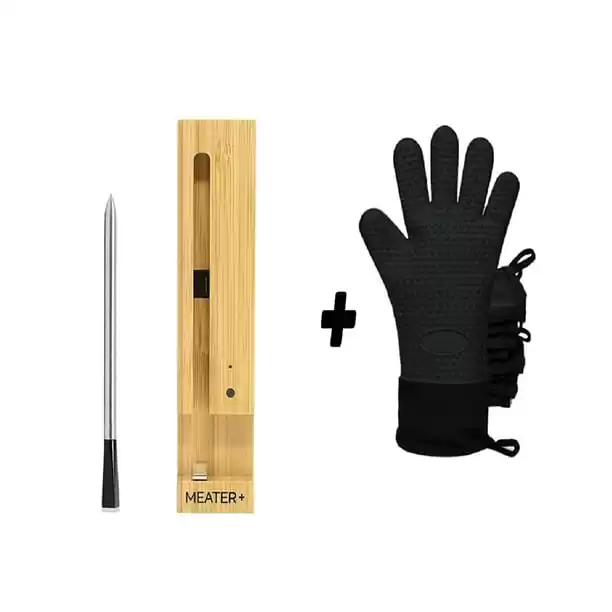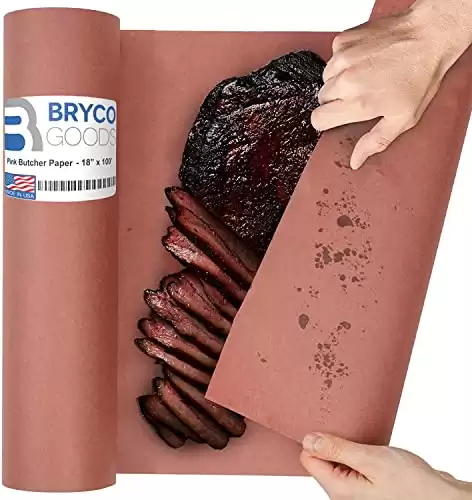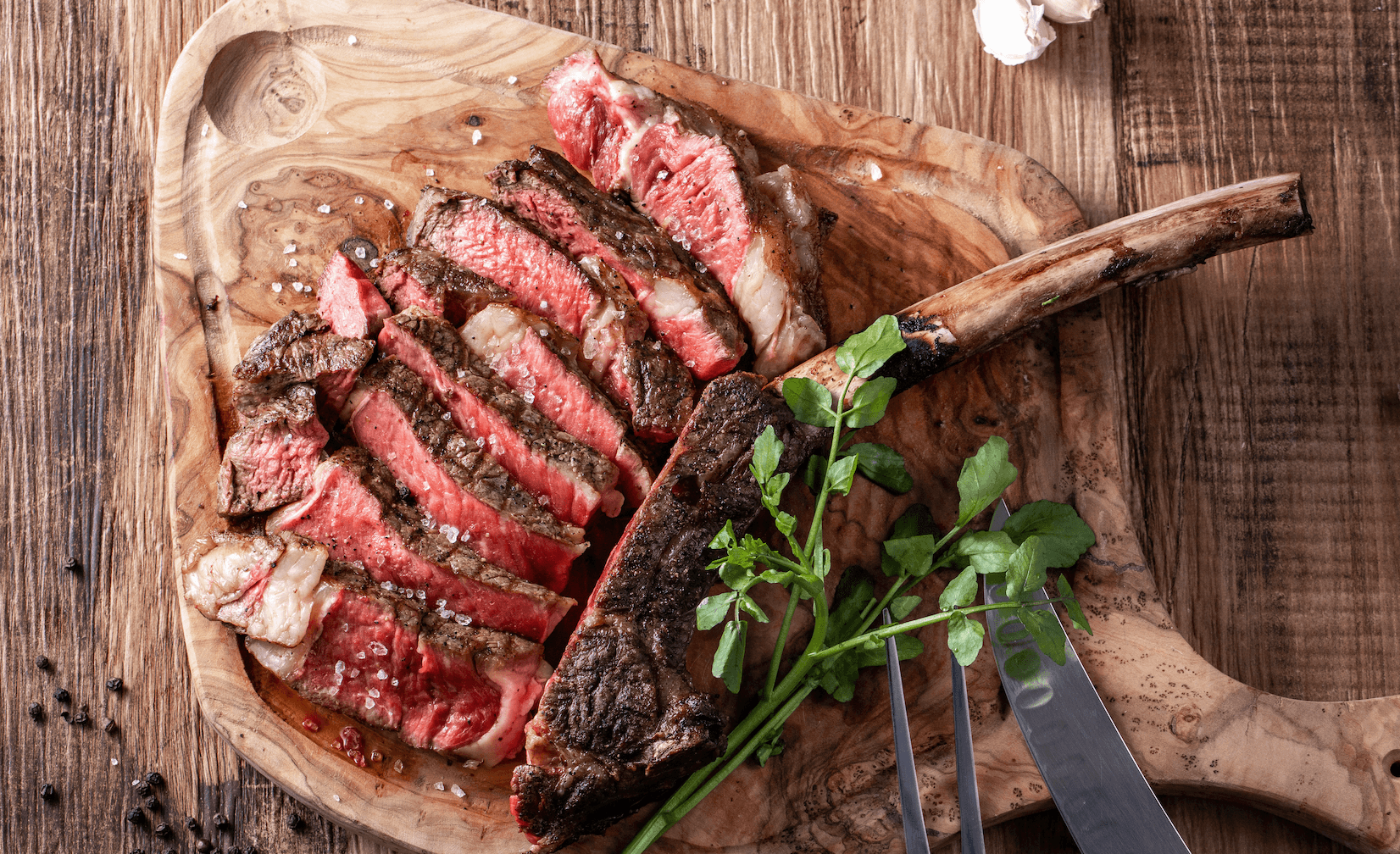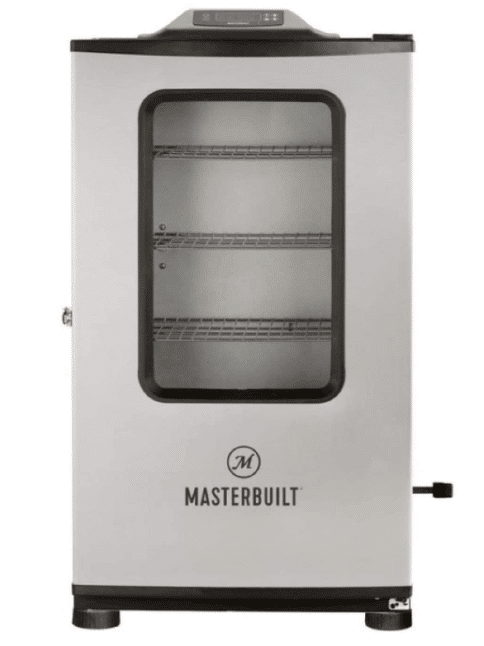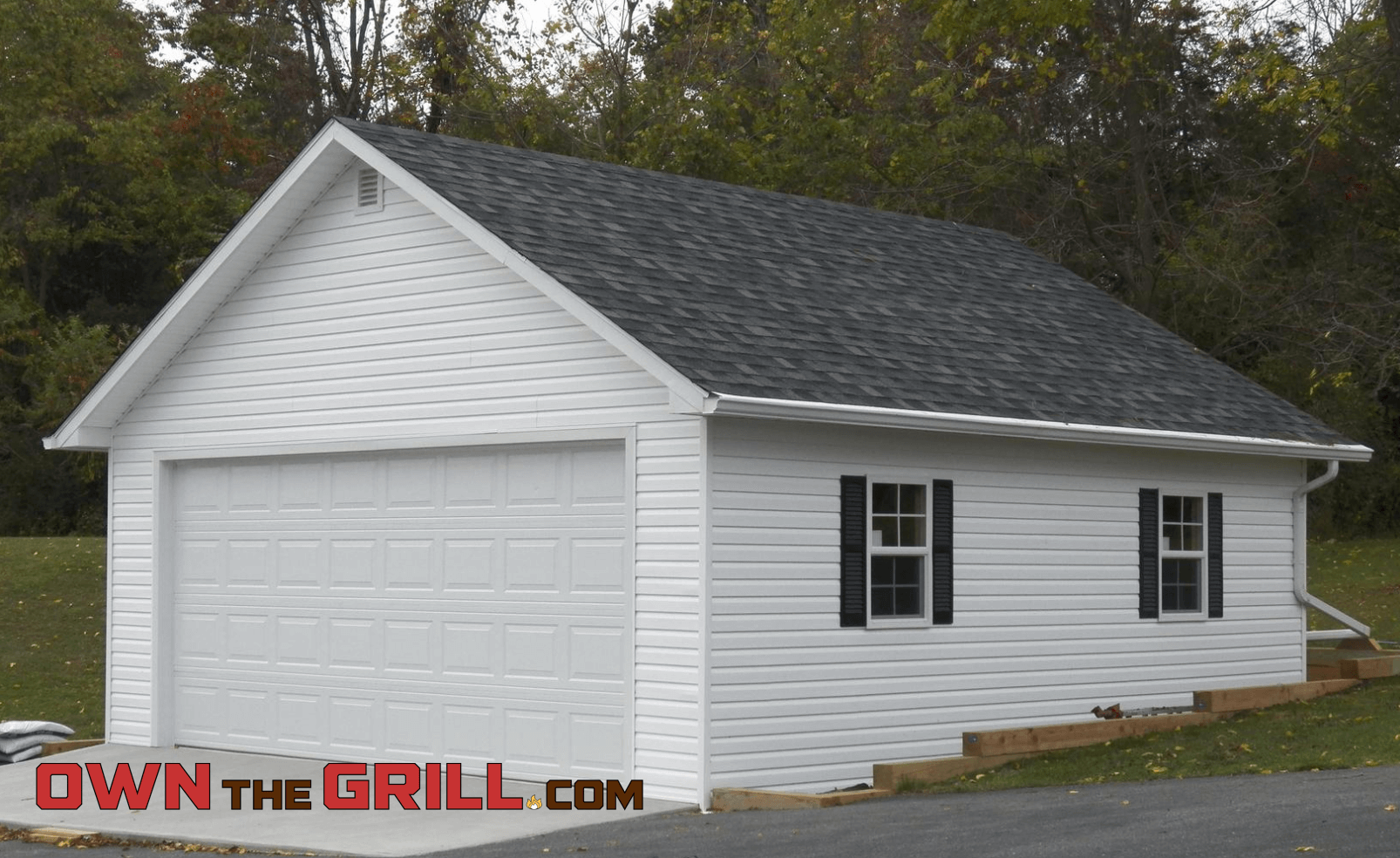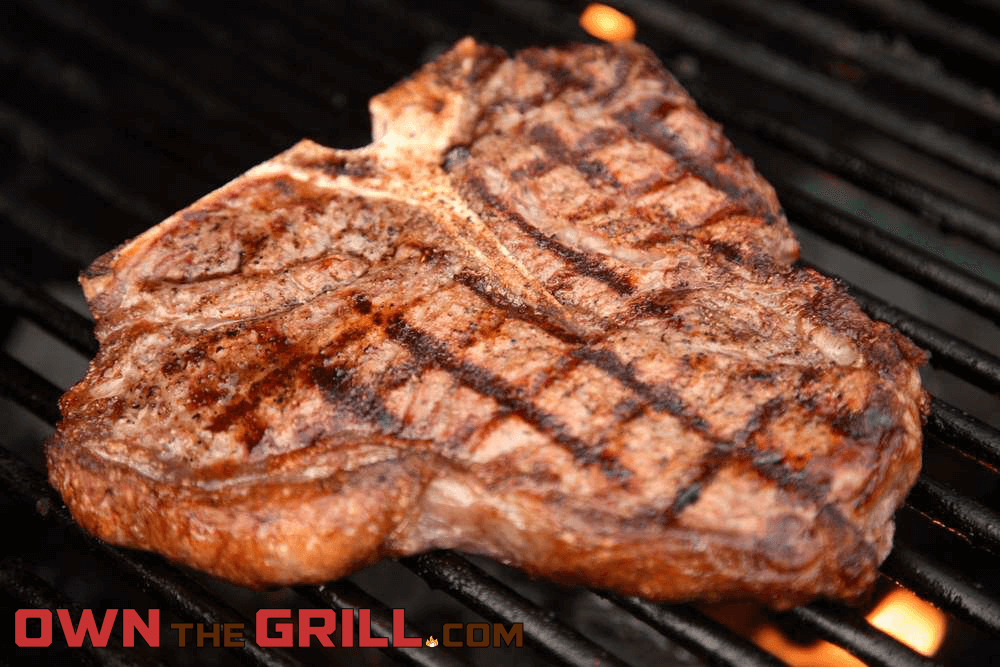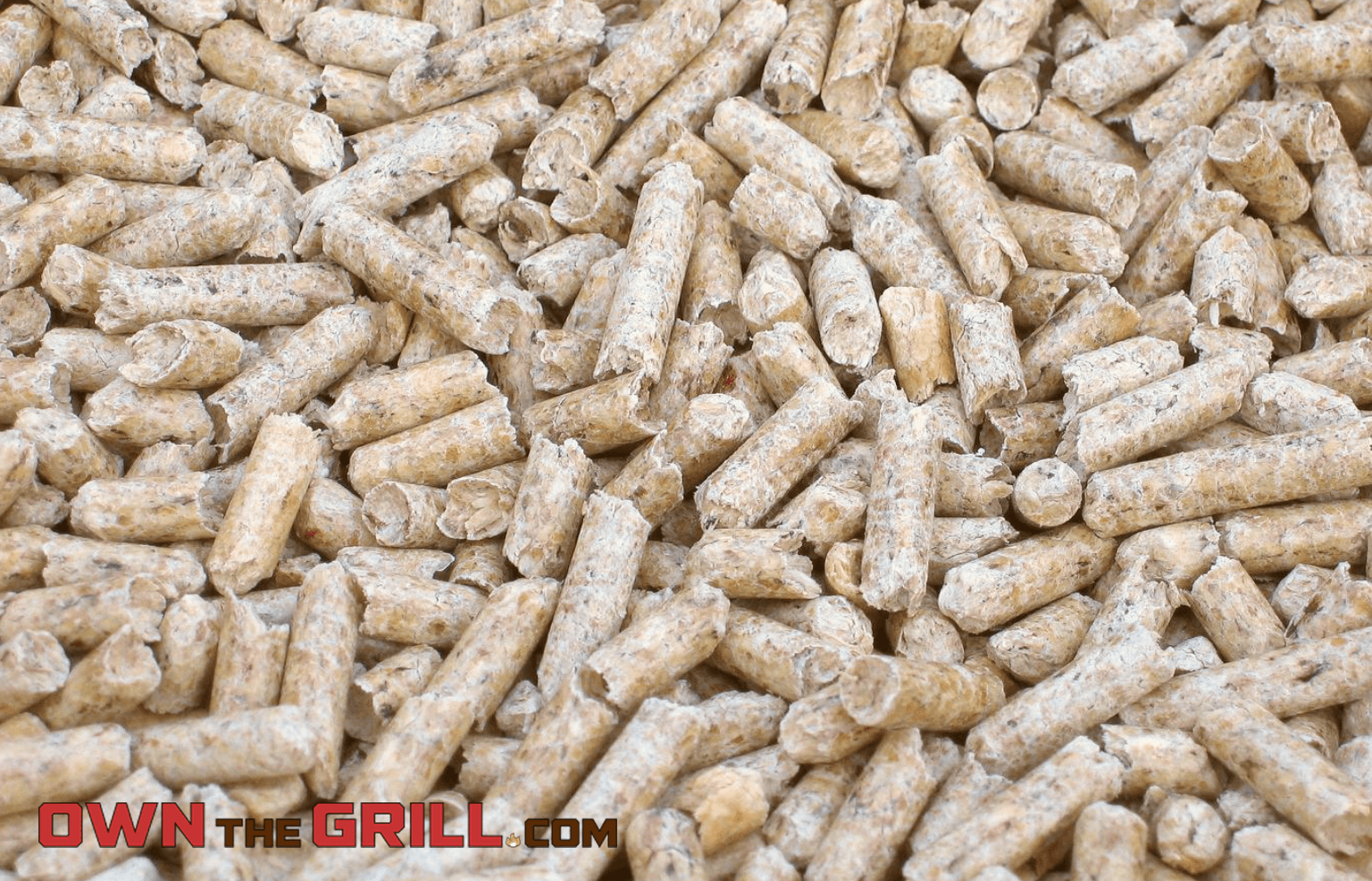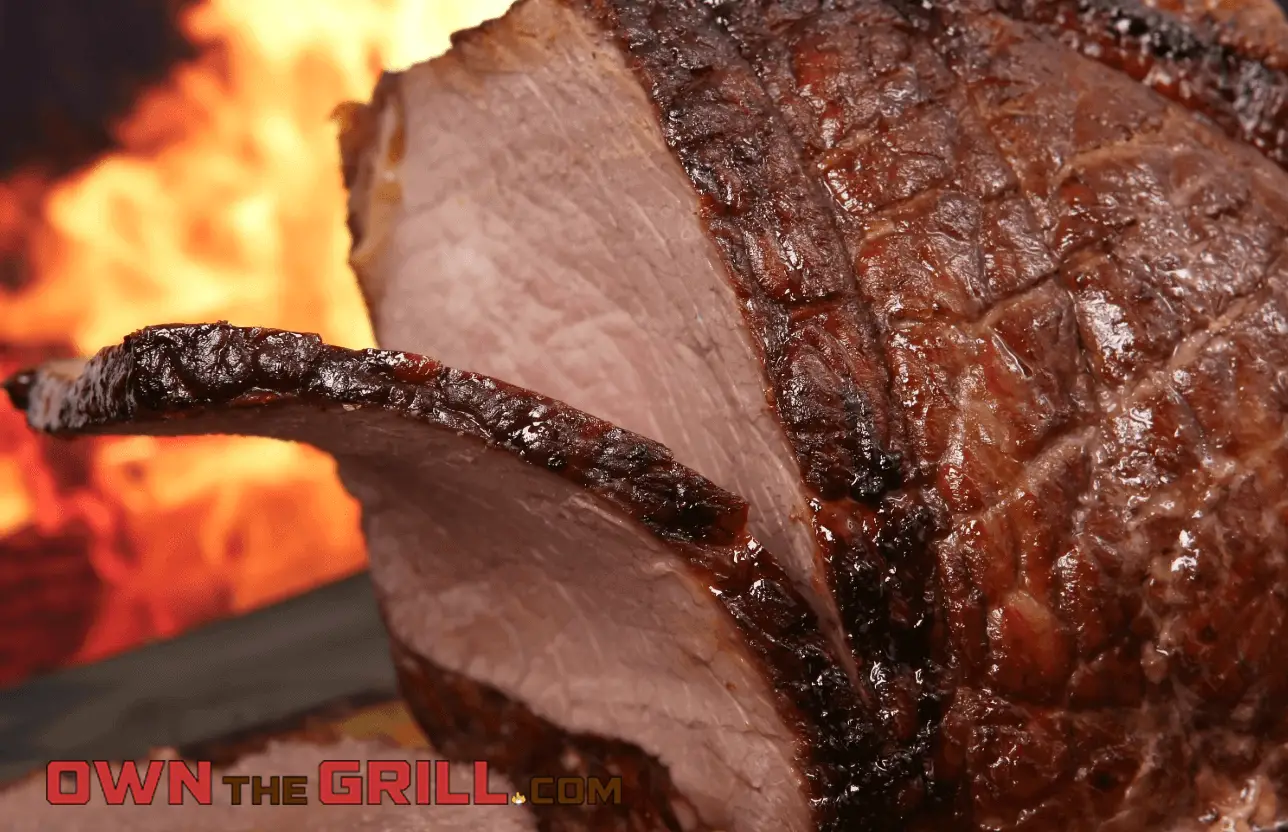This content contains affiliate links. If you make a purchase after clicking a link on this page, we might receive a commission at no cost to you.
Many amateur cooks at the family cookout like to steer clear of brisket cooking duties. After all, it is notoriously difficult to get right and nobody wants to be responsible for hungry bellies and ‘hangry’ faces.
It’s true that cooking the perfect brisket definitely isn’t easy, and there are a lot of variables that can make or break the brisket cooking and eating experience – including the brisket’s internal temperature! However, even the brisket cooking pros had to start somewhere, and that is where we come in.
We have the knowledge on all things brisket so you don’t have to take a blind guess at when to take your meat off the smoker!
Read on to find out everything about the ideal brisket cooking temperature, how to check the temperature, how to cook the brisket, and more!
What Is The Ideal Internal Temperature For Brisket?
The ideal internal temperature for brisket depends on who you ask. A popular opinion is that anywhere around 190ºF is a brisket’s ideal internal temperature. This is because around this point the brisket fat has almost completely rendered and the meat will be extra tender.
However, some people will tell you that the ideal temperature for brisket is 210ºF. This is a great target to aim for because the brisket is tender but not falling apart.
Ultimately, there is no 100% correct way to cook brisket because every piece of brisket is different. You may have to try and cook your brisket in a few different ways to determine what is best for you.
Personally, I like to take the brisket off the smoker when it reaches 200-203ºF. In my experience, this temperature ensures all fat has rendered out without risk of overcooking your beef.
To best read your brisket’s temperature, you should use an instant-read thermometer that you can leave in the brisket.
With 165 feet of range and a dual sensor probe, it doesn't get much easier or more accurate than the Meater Plus.
Sometimes, a smoker or a grill will come with a thermometer built-in. Additionally, sometimes pellet smokers will come complete with two probes – one for the point and one for the flat. This will be especially helpful if you choose to separate them at a later stage of cooking.
We have detailed some of the best ways of cooking brisket below!
The Best Way To Cook Brisket
There are a few different ways you can choose to cook brisket, all yielding different results. Check them out below!
Separating The Brisket
It is important to remember that the flat and the point of the brisket will finish cooking at different times. If this is the case when you’re cooking, then you can take the brisket off the grill, remove the flat from the point, and then place the point back on the grill.
Wrapping The Brisket
Another way people like to cook brisket is to wrap it during a portion of the cook. Simply wait until the internal temperature of the brisket stalls out at around 165ºF and take it off the smoker. Take some butcher paper and double or triple wrap the brisket.
Then, push the probe through the wrapped brisket and put it back on the smoker – then it’s just a waiting game until the beef reaches desired temperature.
Cooking Brisket “Naked”
Another way to cook brisket is to not wrap the brisket and keep it on the smoker for the entire cook.
This method of cooking brisket takes longer than wrapping but the brisket’s bark will be crispy and it will have more of a delicious smoky flavor.
However, you need to be careful with this method that you don’t dry your brisket out. If your smoker doesn’t retain moisture well, consider using a water pan or spritzing your brisket every hour while it cooks.
How To Wrap Brisket
Wrapping your brisket is a great method for cooking it because it allows the brisket to retain its moisture and smokiness while reducing any bitterness and stopping the meat from drying out. It also makes the cooking process much faster.
However, you need to wrap your brisket at the correct times highlighted above. Wrapping the brisket too early will not allow the bark to go crispy.
There are two main methods of wrapping brisket:
Aluminum Foil
Wrapping brisket in foil will make your brisket internal temperature rise faster than any other method. Since moisture can’t escape the foil, this method often leads to extremely tender results.
On the other side of the coin, foil is not porous so smoke won’t be able to penetrate and flavor your beef.
Pink Butcher Paper
Also known as peach paper, pink butcher paper is a popular choice when it comes to wrapping brisket. You should ensure that the pink butcher paper you obtain is unwaxed, unbleached, heavy-duty, and food grade.
Pink butcher paper that has all of these qualities will be resistant to moisture and heat, so it will hold its structure throughout your cook.
Better yet, it is porous – which means that smoke will be able to penetrate inside and flavor your brisket even while it’s wrapped.
Pink butcher paper is made from food-grade virgin Southern Pine pulp and is FDA approved.
- Large roll with easy tear box dispenser
- Refill rolls widely available
Additional Tips For Smoking Brisket
There’s more to cooking brisket than wraps and internal temperature, check out these additional tips!
What Wood Should I Use To Cook My Brisket?
There are many differing opinions on what wood is best to cook brisket. Generally, the best wood to use are woods such as apple, cherry, oak, pecan, or hickory or mesquite. However, it all comes down to taste and preference.
We recommend that you use hickory, mesquite, or oak. These types of wood provide a nice smoky flavor to the meat.
As for what to cook your brisket on, you can use any type of smoker to cook your brisket.
If you don’t own a smoker, then you can still achieve a smoky flavor for your brisket! It’s possible to do a hot and fast brisket on the grill, however you need to be careful to not overcook.
How Do I Keep The Brisket Moist?
Maintaining the brisket’s moisture is definitely challenging, but there are a few options that can ensure success if done correctly.
The first is to spray the meat with either apple cider vinegar, apple juice, or water, which will stop it from drying out. The second option is to purchase a smoker that requires a water pan, which will help to retain the necessary moisture.
Does The Brisket Need To Rest After Cooking?
It is vital that the brisket rests after cooking. By allowing the brisket to rest, you let the outside cool off while the inside remains cooking, which will give the temperature a chance to even out.
While resting, you should wrap the brisket in a towel, foil, or butcher paper and place it in a cooler.
Many people say to let the brisket rest for an hour, but professionals claim that waiting anywhere between two to six hours is necessary for the best brisket.
Other Tips For Cooking Brisket
If the source of heat is coming from underneath the brisket, then you should put the fat side of the brisket face down. Otherwise, put it face up. The fat acts as something of a buffer so that the main section of beef doesn’t cook too fast.
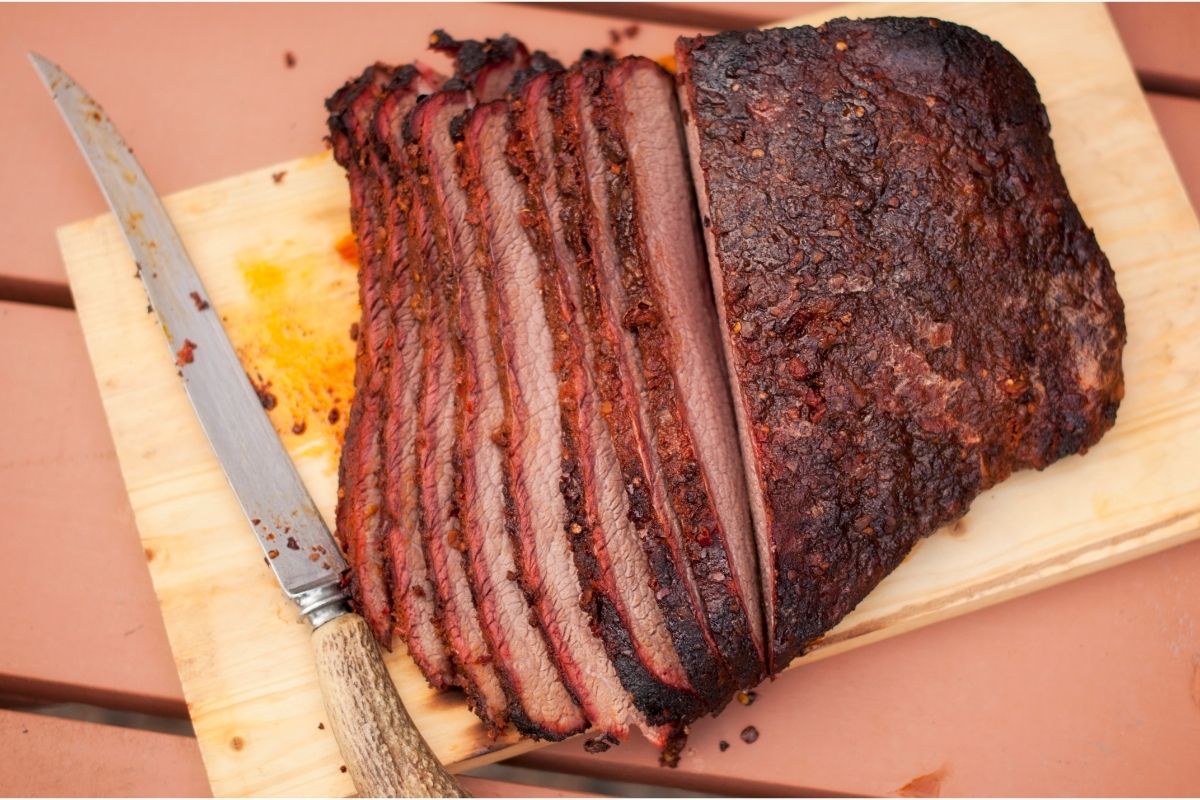
Make sure that you don’t overcrowd your smoker with briskets. If cooking multiple, try to space them at least 3 inches apart. This will help prevent flare-ups which could cause the brisket to burn.
Final Thoughts
Cooking the perfect brisket definitely isn’t easy! Many people have different opinions on the correct internal temperature, the type of wood you should use for cooking, and the best method for cooking brisket.
However, there appears to be no right answer, and the process of cooking brisket comes down to trial and error, practice, and preference.
It is down to you to choose between aiming for an internal temperature of 190-205ºF, you can choose to wrap your brisket in pink or classic butcher paper, or you can choose to leave it to increase its smoky flavor, you can even choose to use a pellet smoker.
What you do with your brisket is up to you! However, there are a few things that everyone needs to do to ensure the best results.
Additionally, you should always let your brisket rest before cutting and eating, so the temperature has a chance to even out.
We cannot guarantee that your brisket will turn out perfect the first time, but we can guarantee that you will perfect your brisket cooking abilities with a little practice!


